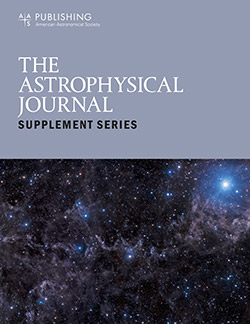Homogenizing SOHO/EIT and SDO/AIA 171 Å Images: A Deep-learning Approach
IF 8.5
1区 物理与天体物理
Q1 ASTRONOMY & ASTROPHYSICS
引用次数: 1
Abstract
Abstract Extreme-ultraviolet (EUV) images of the Sun are becoming an integral part of space weather prediction tasks. However, having different surveys requires the development of instrument-specific prediction algorithms. As an alternative, it is possible to combine multiple surveys to create a homogeneous data set. In this study, we utilize the temporal overlap of Solar and Heliospheric Observatory Extreme ultraviolet Imaging Telescope and Solar Dynamics Observatory Atmospheric Imaging Assembly 171 Å surveys to train an ensemble of deep-learning models for creating a single homogeneous survey of EUV images for two solar cycles. Prior applications of deep learning have focused on validating the homogeneity of the output while overlooking the systematic estimation of uncertainty. We use an approach called “approximate Bayesian ensembling” to generate an ensemble of models whose uncertainty mimics that of a fully Bayesian neural network at a fraction of the cost. We find that ensemble uncertainty goes down as the training set size increases. Additionally, we show that the model ensemble adds immense value to the prediction by showing higher uncertainty in test data that are not well represented in the training data.SOHO/EIT和SDO/AIA 171 Å图像的均匀化:一种深度学习方法
太阳的极紫外(EUV)图像正成为空间天气预报任务中不可或缺的一部分。然而,进行不同的调查需要开发特定于仪器的预测算法。作为一种替代方法,可以将多个调查组合起来创建一个同构数据集。在这项研究中,我们利用太阳和日光层天文台极紫外成像望远镜和太阳动力学天文台大气成像组件171 Å巡天的时间重叠来训练一个深度学习模型集合,用于创建两个太阳周期的单一均匀的EUV图像巡天。深度学习的先前应用主要集中在验证输出的同质性,而忽略了对不确定性的系统估计。我们使用一种称为“近似贝叶斯集成”的方法来生成模型的集成,其不确定性以一小部分成本模仿完全贝叶斯神经网络的不确定性。我们发现集合不确定性随着训练集规模的增大而减小。此外,我们表明,模型集成通过在训练数据中没有很好地表示的测试数据中显示更高的不确定性,为预测增加了巨大的价值。
本文章由计算机程序翻译,如有差异,请以英文原文为准。
求助全文
约1分钟内获得全文
求助全文
来源期刊

Astrophysical Journal Supplement Series
地学天文-天文与天体物理
CiteScore
14.50
自引率
5.70%
发文量
264
审稿时长
2 months
期刊介绍:
The Astrophysical Journal Supplement (ApJS) serves as an open-access journal that publishes significant articles featuring extensive data or calculations in the field of astrophysics. It also facilitates Special Issues, presenting thematically related papers simultaneously in a single volume.
 求助内容:
求助内容: 应助结果提醒方式:
应助结果提醒方式:


